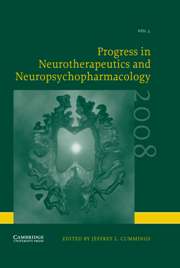No CrossRef data available.
Article contents
Ropinirole 24-h Prolonged Release in Advanced Parkinson Disease: Review of a Randomized, Double-Blind, Placebo-Controlled Study (EASE PD - Adjunct Study)
Published online by Cambridge University Press: 22 October 2007
Extract
ABSTRACT
This chapter reviews the EASE PD - Adjunct trial which is a double-blind, placebo-controlled, 24-week study of 393 Parkinson disease (PD) subjects with levodopa-induced motor fluctuations randomized to ropinirole 24-h prolonged release or placebo. The objective of the trial was to assess the efficacy and tolerability of once daily ropinirole 24-h prolonged release as an adjunct to levodopa. The primary outcome variable was the reduction in daily “off” time as measured by subject diaries which was significantly reduced by 2.1 h with ropinirole 24-h prolonged release (mean dosage: 18.8 mg/day) compared to 0.3 h with placebo. There were also significant improvements in daily “on” time, “on” time without troublesome dyskinesia, Unified Parkinson's Disease Rating Scale (UPDRS) motor and activities of daily living subscales, depression, quality of life and sleep with ropinirole 24-h prolonged release compared to placebo. The most common adverse events with ropinirole 24-h prolonged release were dyskinesia, nausea, dizziness, somnolence, hallucinations and orthostatic hypotension. Ropinirole 24-h prolonged release was well tolerated and led to improvements in both motor and non-motor symptoms of PD.
- Type
- Research Article
- Information
- Progress in Neurotherapeutics and Neuropsychopharmacology , Volume 3 , Issue 1 , January 2008 , pp. 73 - 84
- Copyright
- © 2008 Cambridge University Press




